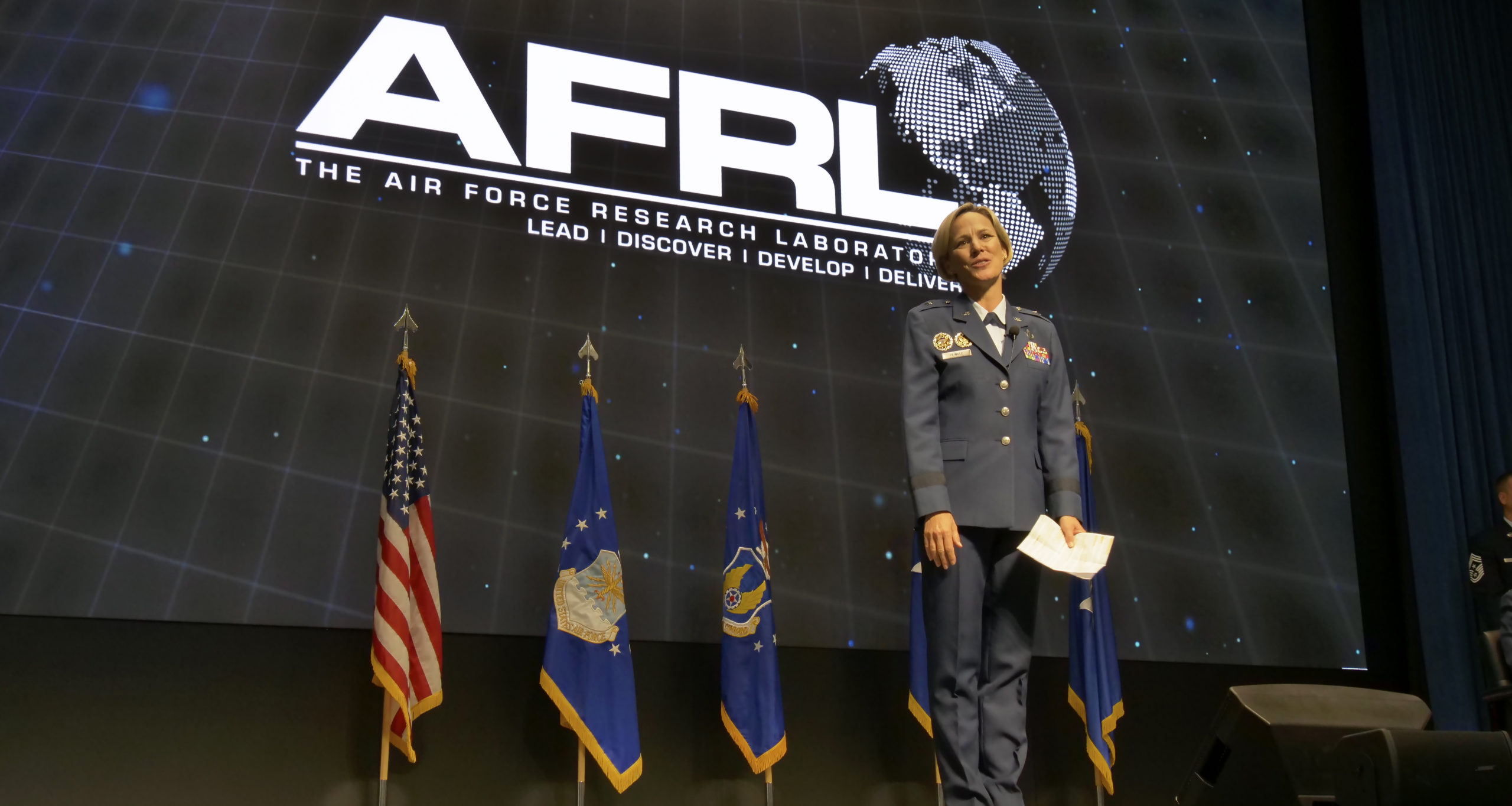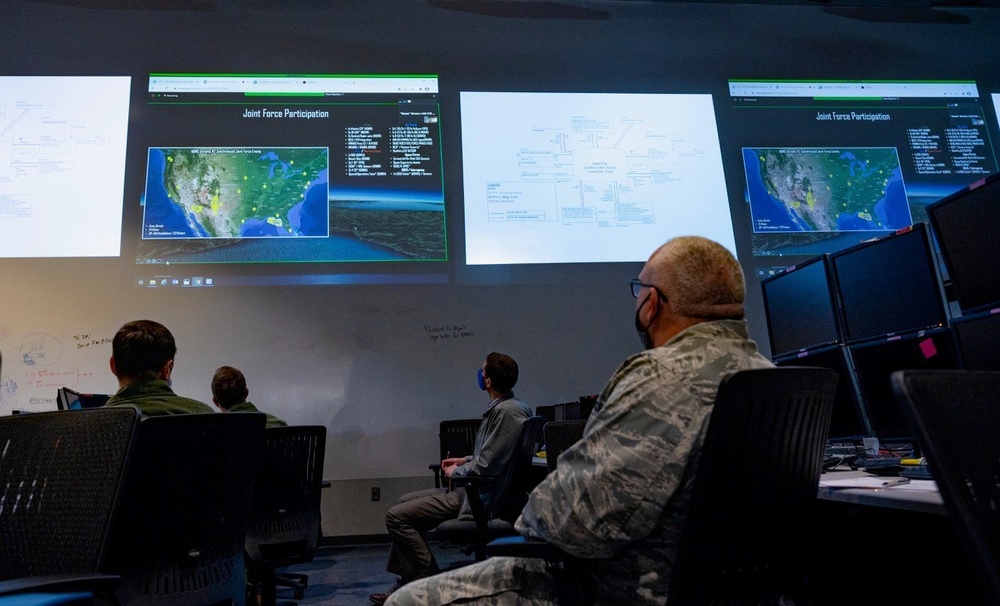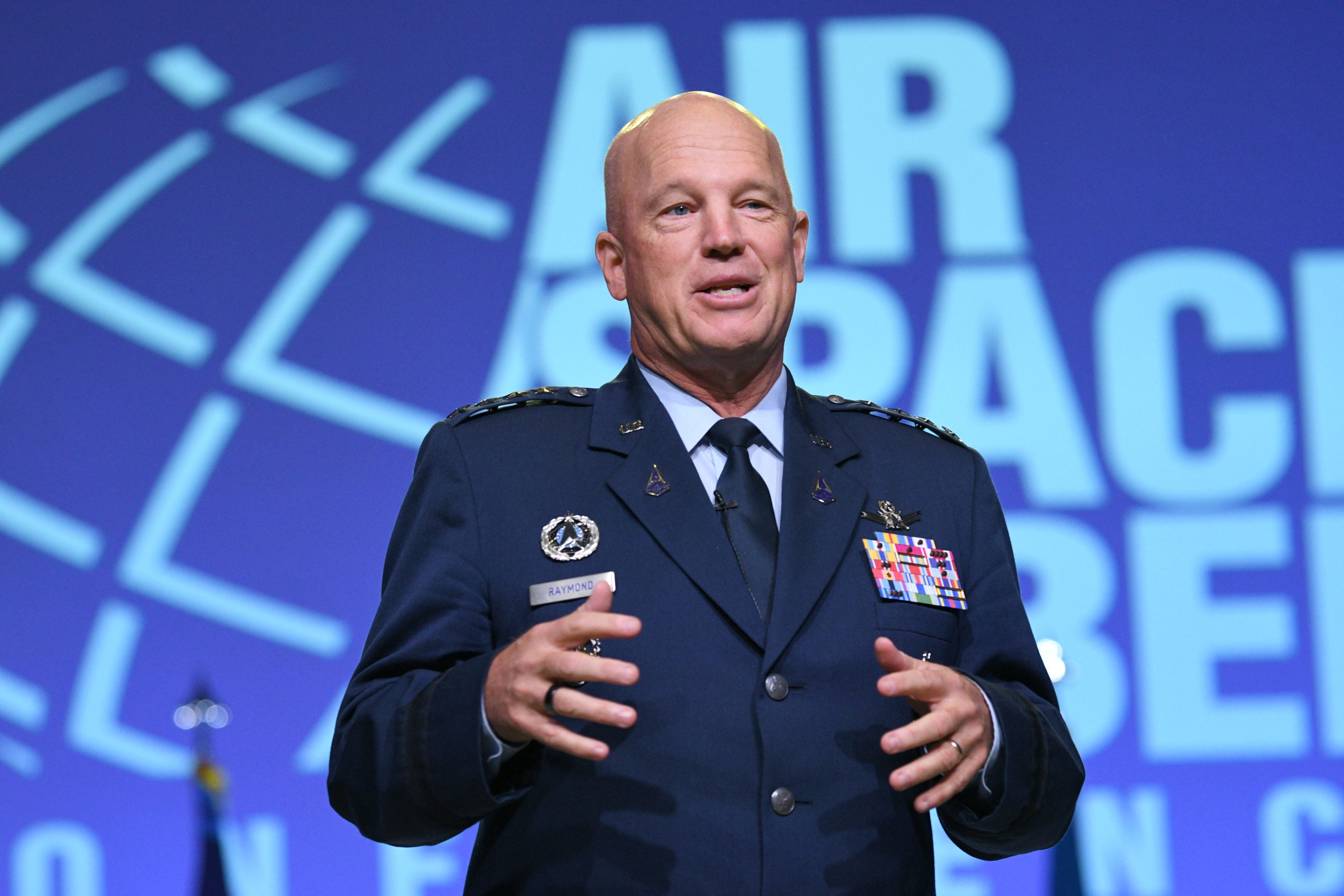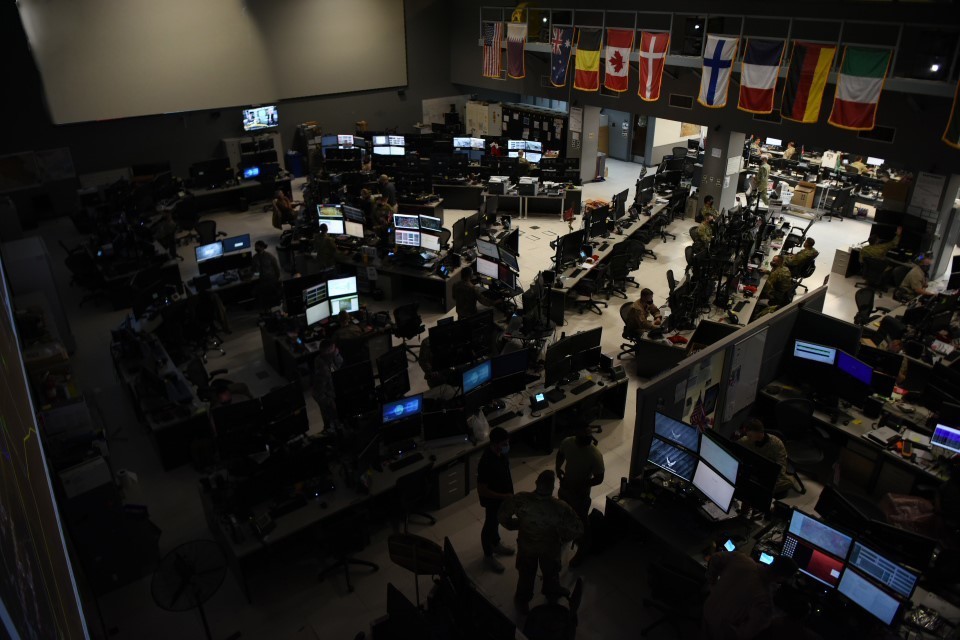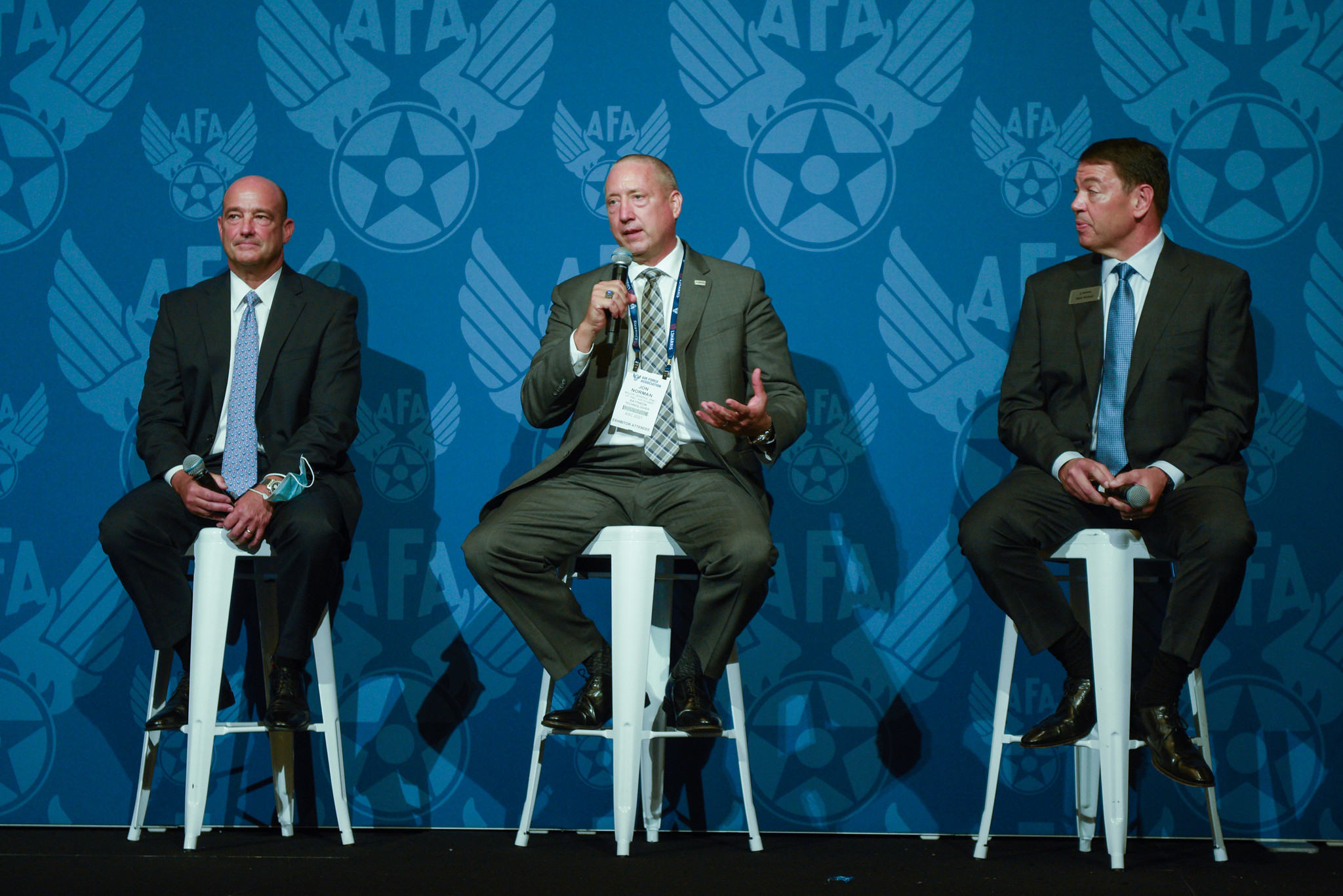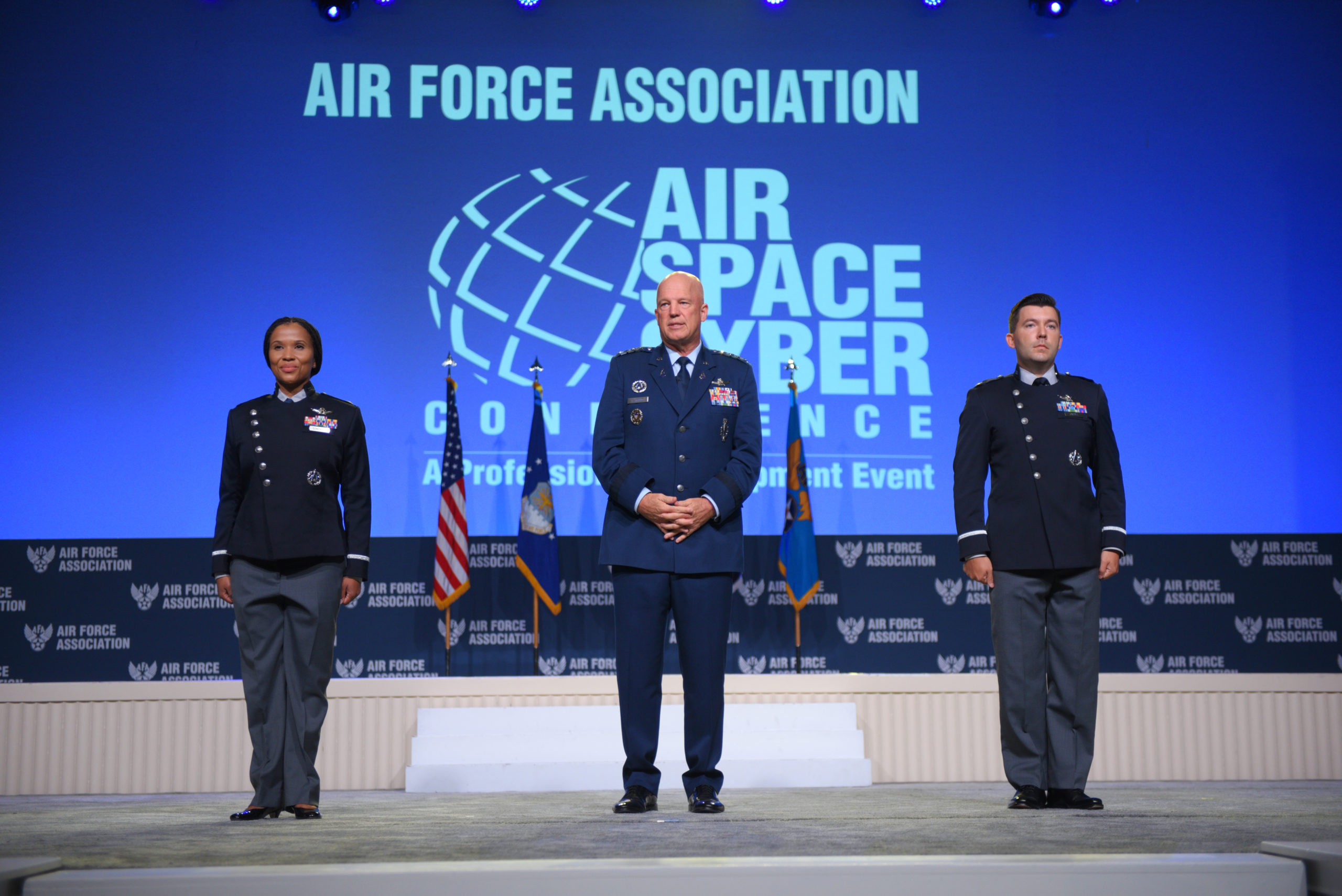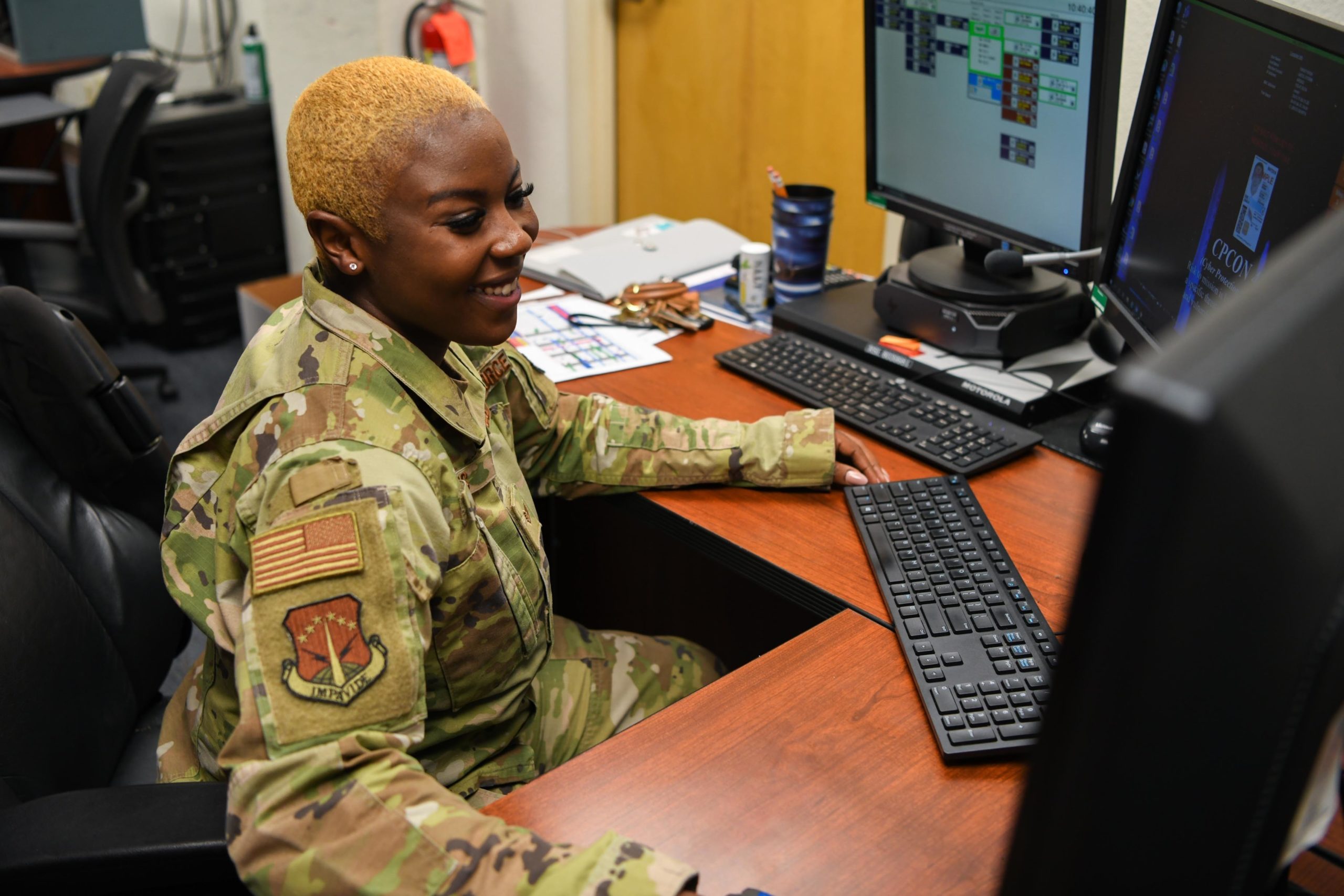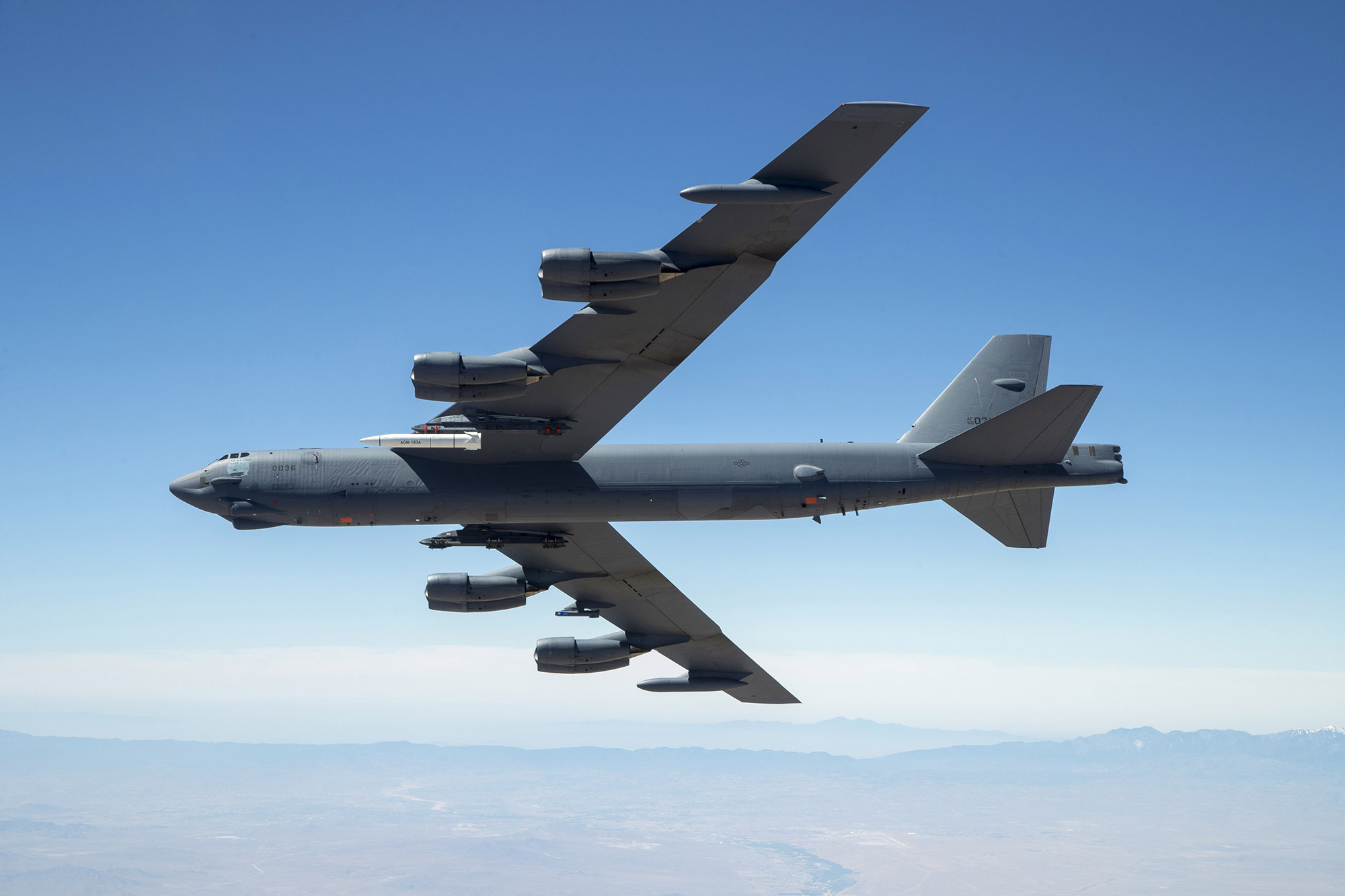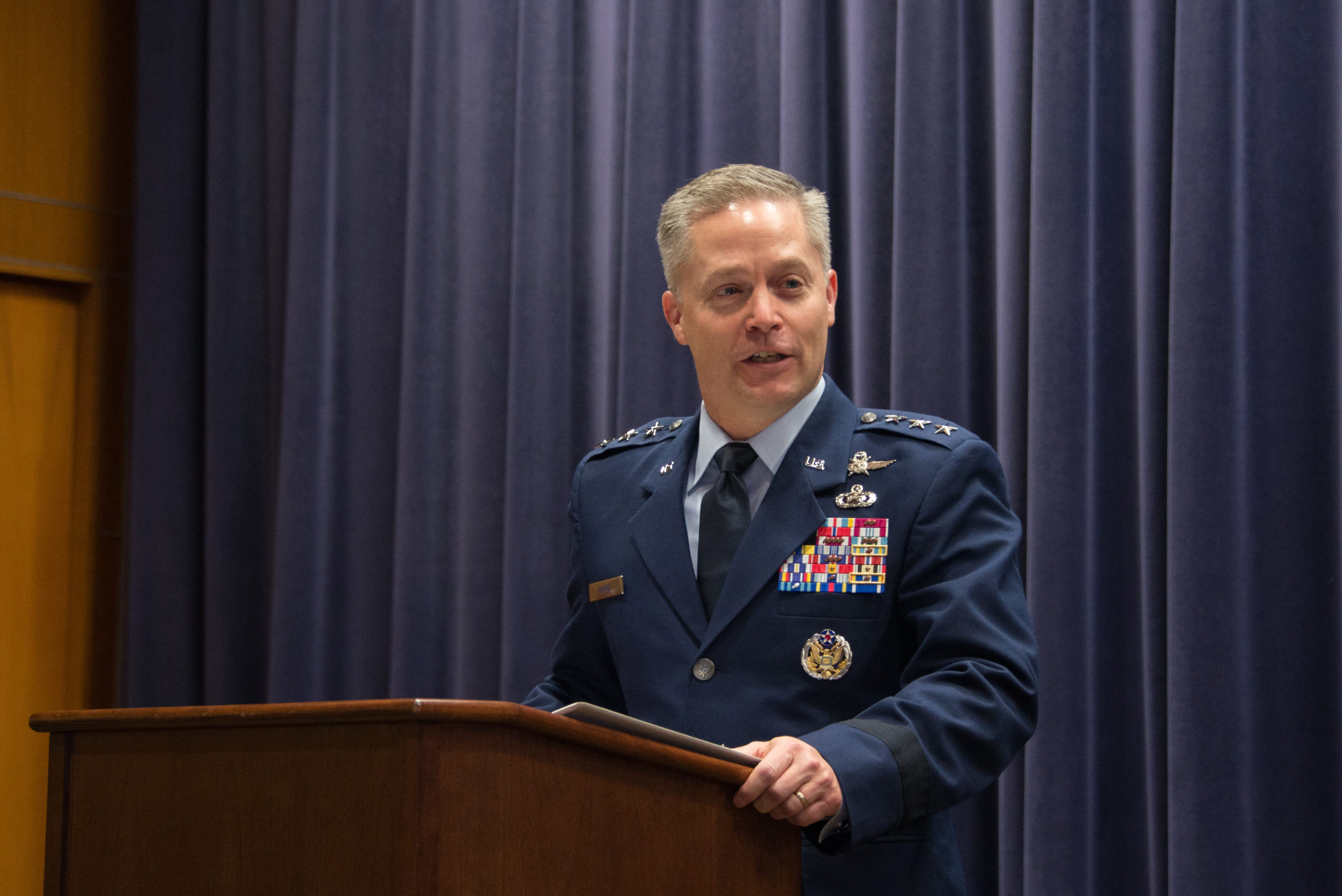Air Force Research Laboratory Commander Maj. Gen. Heather L. Pringle is bringing fresh eyes and outsider perspectives to the storied lab, and she’s hiring a new executive to ensure that it will serve the newly created Space Force as well as it serves its traditional customers in the Air Force.
Pringle announced the creation of the new post of deputy technology executive officer for space science and technology shortly after assuming her command in June 2020, saying the official would act as a “single focal point” for Space Force customers. Then in September 2020, she quietly appointed Kelly Hammett, who runs the lab’s Directed Energy Directorate, to the role in an interim capacity. The DE directorate is one of four elements of the lab that have been administratively transferred in whole or in part to the Space Force—the others being the Space Vehicles Directorate, the Rocket Propulsion Division, and the Systems Technology Office of the Sensors Directorate.
But Hammett was “dual hatted” as DE director and deputy TEO for space, Pringle said. “He has another full-time job, but he has been doing and is doing a phenomenal job of bringing together our entire space science and technology portfolio, ensuring that it’s well aligned with the Space Force’s strategic priorities and that we’re meeting what our Guardians need for the future of warfighting,” she said.
The deputy TEO for space chairs a new Space Science and Technology Board that the AFRL leadership created to better integrate space and Space Force priorities across the entire portfolio of the lab’s activities.
Pringle added that the hunt for a full-time, permanent appointee to the new post “is ongoing right now. I don’t have the results of that yet, because we’re still in the middle of it,” she said.
Pringle has also made a series of hires of outside experts, using new authorities for enhanced remuneration recently provided by Congress. She said she had appointed “highly qualified experts” as strategic advisers in five key areas where they will “ensure that our science and technology portfolio is at the cutting edge and we’re bringing in those outside ideas.” The five areas and the respective appointees are:
- Data-driven decision making: Medy Agami
- Autonomy: Jean-Charles Lede
- Modeling, simulation, and analysis: Jamieson Gump
- Communications and networking: Aniruddha Karmarkar
- Microelectronics: Yadunath Zambre
Pringle has made bringing in outsiders something of a trademark, said AFRL Command Chief Master Sgt. James “Bill” Fitch, because she understood the benefits of a fresh perspective.
“I’m not a traditional Air Force Materiel Command guy,” he said. (AFMC is the home command for AFRL.) “I’ve never been in this command or in AFRL. I’m an operator by trade—that is my background.
That background—and the focus it brought onto the warfighter as the end user of AFRL technology—was the reason he got hired two months ago, Fitch explained. “She’s such a maverick. She wanted an outsider—she wanted somebody that could, as an operator, come in and look at how science and technology is being done and is being grown and evolved and how it’s going to be applied to the warfighter.”
